Ecommerce sites work hard to persuade visitors to shop with them, and a big part of this is building trust.
Without trust, customers may be reluctant to shop in the first place, or return to buy again after a negative experience.
Shoppers think about trust in a number of ways; whether they trust the site to deliver on its promises, the security of the payment process and their personal data, as well as customer service issues such as returns.
A recent study from Baymard focuses on the security aspect of trust, looking at how users think about security during the checkout process and what affects their decision to trust a site or not.
Baymard surveyed 2,584 customers to ask why they would abandon during checkout.
17% said they had abandoned a purchase during the last three months because they didn’t trust a site with their payment card information.
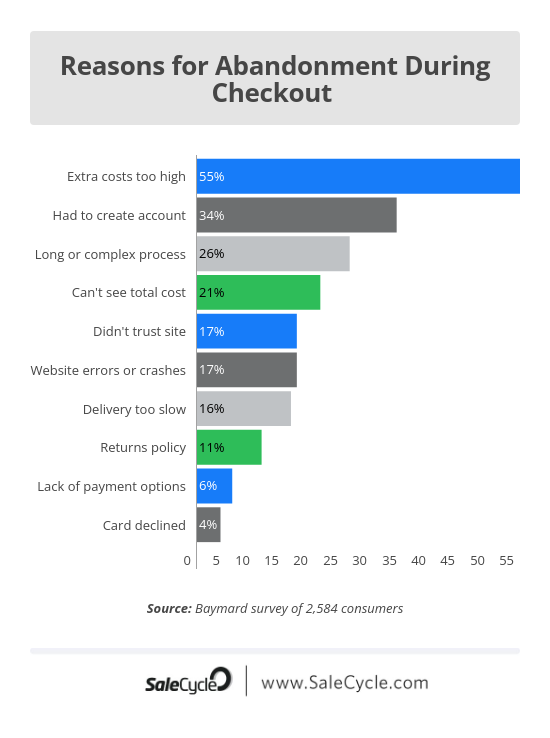

Ecommerce Trust Badges
This begs the question of how users perceive security on-site, and what factors would affect their decision to purchase.
One possible answer is to reassure customers with trustmarks, or site seals as they’re also known.
These badges are designed to reassure customers when browsing a site, and specifically at the point of purchase when they’re most likely to be thinking about payment security.
Baymard asks which badge gives users the best sense of trust when buying, finding that Norton led by some distance, followed by Google Trusted Store, BBB, and McAfee.
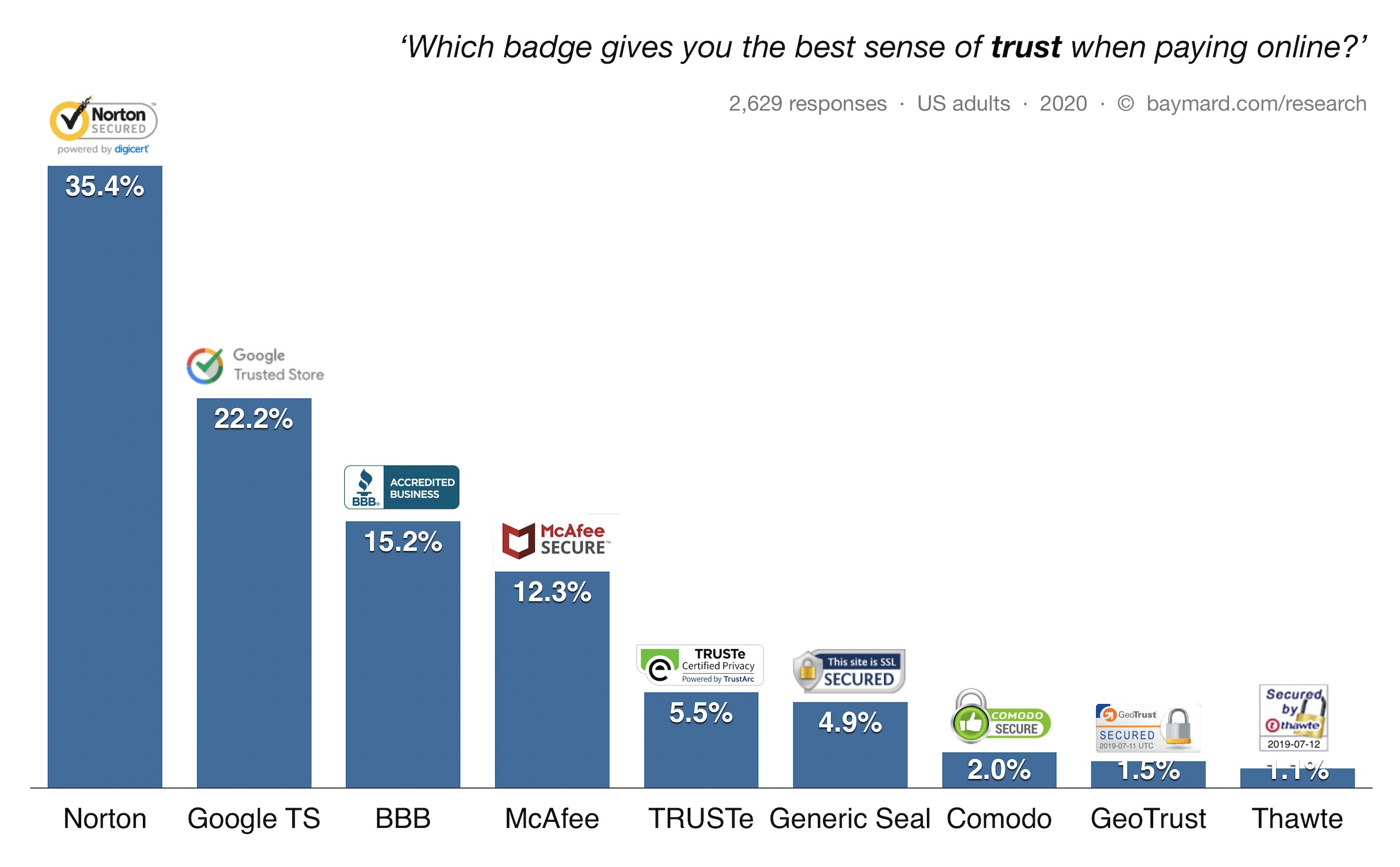

The interesting thing here is that many of these are ‘trust’ seals rather than actual guarantees of site security.
Norton is an SSL which assures customers that payment is encrypted and safe, but Google Trusted Stores and BBB only offer assurances around customer complaints and refunds.
The common theme here is that these logos are from brands that shoppers know and trust, as many web users will not have much knowledge of technical security.
Norton and McAfee will be familiar to many users of laptops and PCs as security brands, while Google is known to every web user. They therefore trust the logos that make them feel most secure.
These are also the trust logos that people are used to seeing, and this ubiquity can reinforce the message.
However, there are other ways to build trust beyond using trustmarks. These may even be more important, and can complement the use of security logos.
5 Ways To Build Trust In Ecommerce
Site Security and Performance
Sites should be secure, which includes using https for a more secure connection.
It also avoids users seeing messages like this, shown on Google Chrome, which would be an instant deterrent:
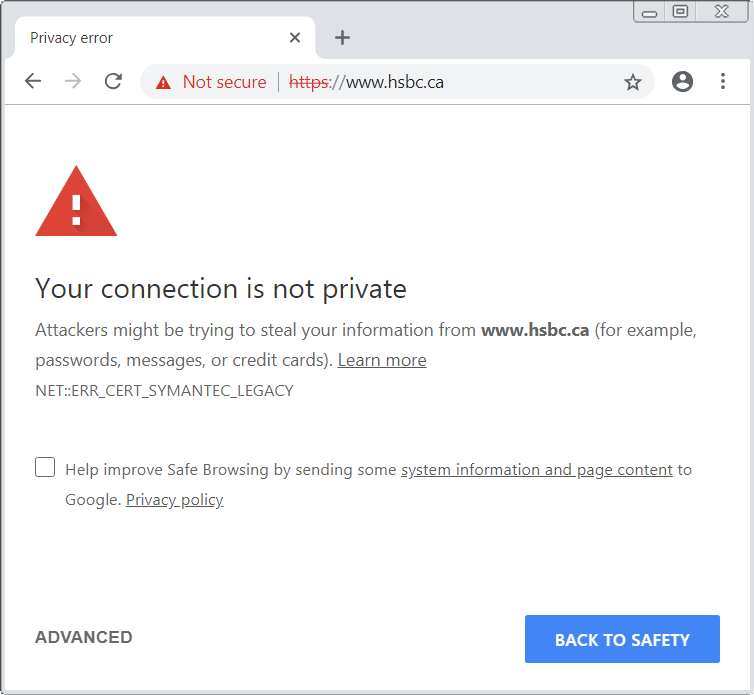

It’s also about how a site works for visitors as they use it. A site which is slow to load will not only frustrate users as they try to shop but will also raise questions about how trustworthy it is.
Slow loading pages, or pages that fail to load are conversion killers. 17% of users cited website errors or crashes as reasons for abandoning checkout.
Site design and usability
If your site is unfamiliar to users, then they’ll form a fairly quick idea about it when they arrive.
If it looks like was designed ten years ago and hasn’t been updated since, they will start to wonder. However, a professional and stylish site design – even a boring but familiar one – will help to address any concerns.
Usability is another key factor. A site that works well and is easy to use helps to build customer trust and confidence.
Design of checkout pages
Design during checkout can also have an impact on user trust. It’s important to build a smooth checkout process to increase conversion rates.
Many sites choose a different design for checkout pages, enclosing the checkout and removing the navigation options and promotional banners that are visible on the rest of the site.
Here’s an example from Graham & Green, which uses borders to enclose the payment page. It gives this page a different feel from the rest of the site and provides a visual reinforcement for users.
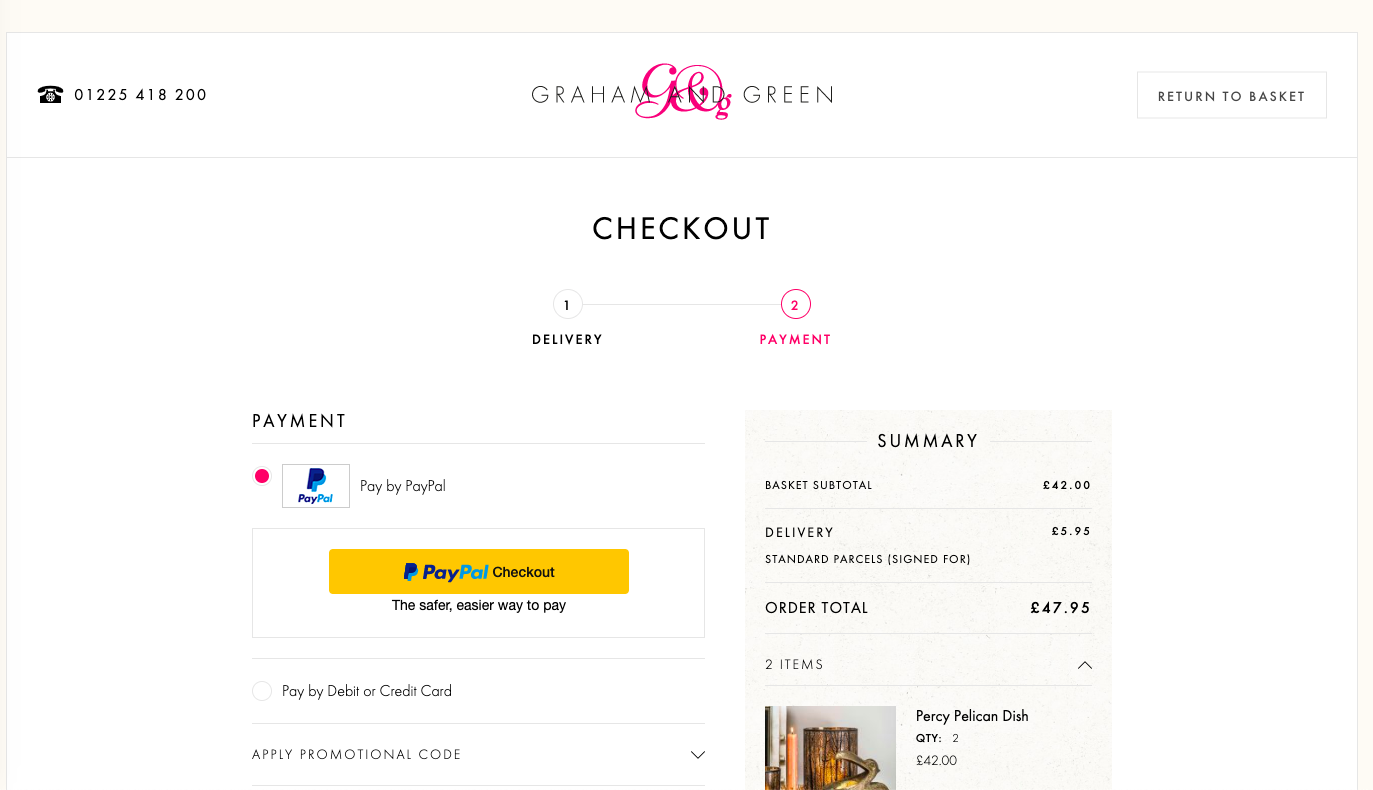

Newegg goes further by shading the card section of checkout, which emphasises this part of the form.


Checkout designs like this can help with user trust but can also help with conversion.
With plenty of white space and fewer distractions, designs like these focus shoppers’ attention on the business of paying and completing checkout.
Other factors here also help to reassure shoppers. For example, the visible phone number on Graham & Greene’s checkout is useful if shoppers have questions at this stage, but also acts as a reassurance; if a retailer is happy for shoppers to contact them, then they can seem more trustworthy.
Use of alternate payment options
Offering a choice of payment options helps online retailers cater for different customer preferences, but can also help to allay any security concerns.
For example, payment methods such as PayPal or Amazon Pay as they both offer guarantees on their purchases if things go wrong. For users unfamiliar with a retailer, this extra protection can be persuasive.
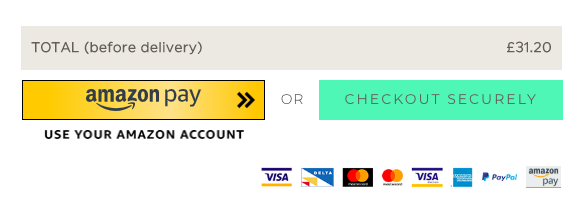

User reviews
Social proof, in the form of user reviews is another way to reassure shoppers that a site can be trusted.
They improve a site’s credibility, telling users that other people have bought from a retailer and have been happy with the experience.
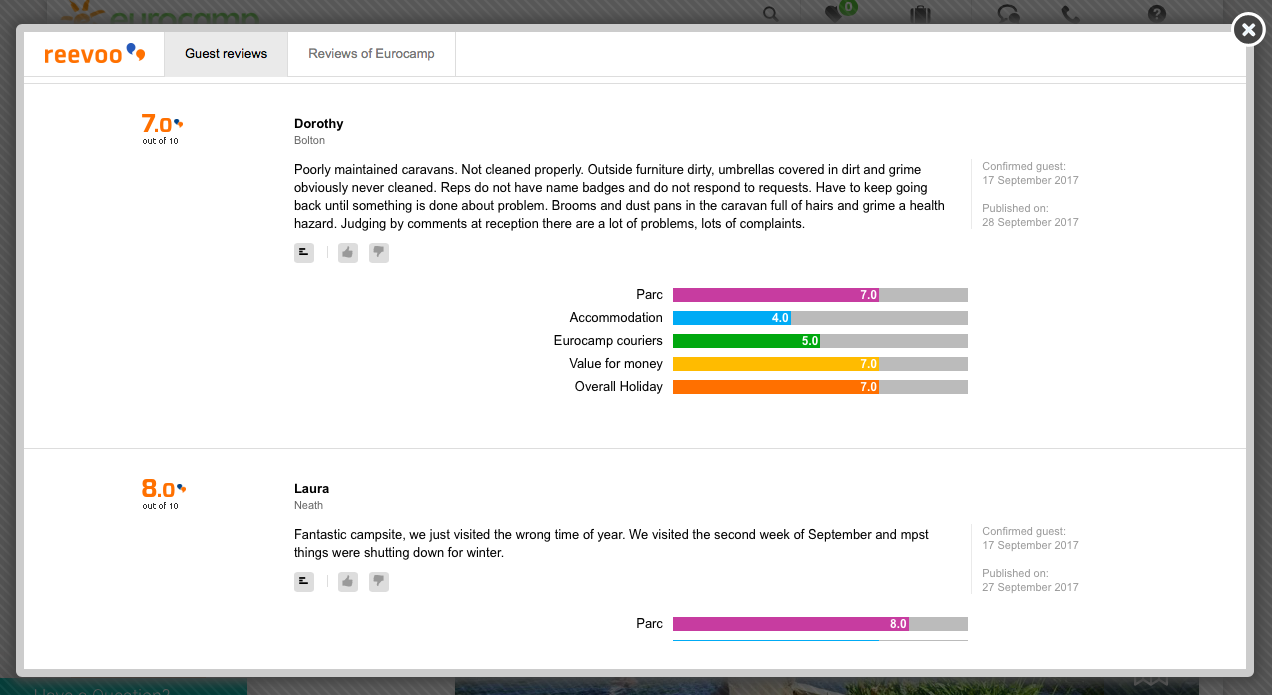

In Summary
For online retailers, trust is key. It covers more then just payment security, as customers decide which retailers they can rely on based on the overall customer experience.
If you let customers down with poor delivery performance, or failing to deal with post sales issues, then this trust can be lost.
Using signals on site like trust logos and user reviews all help to build trust, and it’s certainly worth testing the use of logos on checkout pages to see how this affects conversion.
However, it’s important to look at the overall customer journey, as it’s hard to recover trust with customers once it has been lost.
Speak to an expert
Learn how to convert your online audience into revenue with our experts.
Graham Charlton
Graham Charlton is Editor in Chief at SaleCycle. He's been covering ecommerce and digital marketing for more than a decade, having previously written reports and articles for Econsultancy. ClickZ, Search Engine Watch and more.









![Valentine’s Day Ecommerce Tips and Trends [2024 Strategy]](https://www.salecycle.com/wp-content/uploads/2019/01/valentines-ecommerce-1.png)



![How SaleCycle helped Vodafone increase their online sales by an additional 2,000 additional sales per month [Extended Version]](https://www.salecycle.com/wp-content/uploads/2023/08/vodafone-banner.webp)





